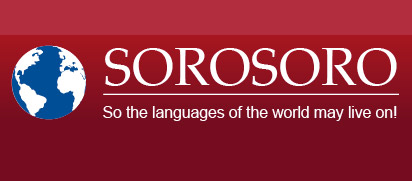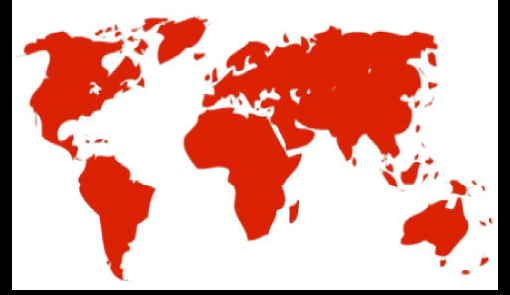Print  |
|

Quechua Santiagueño
Data collected by the UNICEF
Data on Quechua Santiagueño
Alternative names: Quichua, Runa simi, Santiago del Estero Quichua, Argentino Quichua.
Main dialects: Variations of Quechua might exist but the lack of scientific knowledge on the subject doesn’t allow them to be defined in a consensual way.
Classification: Family of Quechuan languages. South Quechua II-C branch.
The classification of the Quechuan languages is the object of constant debates (see our page on the Quechuan languages). The distinction between Quechuan languages and dialects is a very complex issue on which few people agree.
Quechua Santiagueño belongs to the Quechua II-C group as all South Quechuan languages and is very close to other languages of the group (for instance Cuzco and Bolivian Quechua, two of the most spoken Quechuan languages). However, they are all often considered as dialects. The II-C group is therefore seen as a large dialect group where each variation of the language is divided in “sub-dialects”.
We are following the point of view of Campbell (1997) and Fabre (2005), who nevertheless decided to present it separately.
Geographic area: Argentina, in the North-East. Mainly in the province of Santiago del Estero and also in the city of Buenos Aires. There may be a few speakers in the province of Salta.
Number of speakers: It is hard to assess the accurate number of Quechua Santiagueño speakers. The 2001 ECPI (Complementary investigation on native populations, official census) only considers the people who claim to belong to the Quechua “ethnic” group, which only concerns 6,000 people, among whom 2,000 Quechua speakers.
But the large majority of speakers are “mixed”, urban most of the time, and aren’t considered as part of the “native” population, a bit like Paraguayan Guarani speakers in Paraguay. Therefore, they are not taken into account for the census. The estimate number of speakers varies from 80,000 (UNESCO) to 150,000 (Alderetes, 1997).
We could also add a part of the Colla population, including a few hypothetical Spanish-Quechua bilingual speakers, as well as a few people who migrated from Bolivia.
Status of the language: No official status.
Vitality and Transmission: The UNESCO considers Quechua Santiagueño as an endangered language.
All speakers are bilingual in Quechua and Spanish. Old people still use it within their family circle or in informal communication situations, but young people don’t really use it anymore. Transmittal is slowing down because the language is mistakenly seen as an obstacle to social integration.
Quechua speakers are indeed being related to Bolivian migrants who are the victims of a growing and sometimes very violent discrimination.
Historical and ethnographic observations
– The general language:
Two theories explain the presence of Quechua in the North-West of Argentina.
The first theory places the presence of Quechua in the region back to the colonisation policy of the Inca Empire and the migration of Quechua-speaking colonists, the Mitimaes. According to Sichra (2010), “general Quechua” was spoken in the area, including by the non-native population, as lingua franca.
The general language was a type of Quechua usually spoken on the central Peruvian coast, and became the “official” language of the Inca Empire.
The general language of the Inca Empire spread across the South Andes at the same time as the imperial political and economic territory. This expansion started 60 years before the Spanish Conquista.
The second theory on the other hand places it back to the Conquista. Conquistador Diego de Rojas would have come to the area of Santiago del Estero from Cuzco, along with numerous Yanaconas speakers of a Quechua language. Quechua would have then stood out as the communication language of the area during the territorial conquest.
From the middle of the 16th century, the Spanish settled in Santiago del Estero and the use of the language lasted for some time among the mixed population. Quechua then became the language of catechism for Andean populations. The type of Quechua used for that matter was based on the general language, normalized by the priests. It lasted until 1770 when King Carlos III forbade the use of Quechua.
The Quechuas from Argentina were then persecuted by discrimination, which led to the disappearance of the language, except in Santiago del Estero where its use lasted and was mixed up with the variations of Quechua brought by Bolivian migrants.
– The Collas and lost Andean ethnic groups:
The adaptation to the periods of colonial invasion, wars and migrations towards urban centres provoked the fast disappearance of native languages in the North-West of Argentina. Many people have lost their ethnic identity, denied and discriminated against, and gathered under a new name, Colla. This term has no historical influence, in fact, it includes several Andean and pre-Inca populations.
The Atacama, Omaguaca, Tonocoté, Comechingone, Sanivarone Andean populations have disappeared as ethnic groups. It may be that these populations abandoned their culture under the pressure of successive colonization and took up one of the two main languages of the Andes: Aymara or Quechua. In return, Quechua Santiagueño probably was influenced by those dead languages.
At the end of the 20th century, the censuses only recognized three Andean groups in Argentina (Quechua and Aymaya aside): the Collas, the Diaguita-Calchaquis and the Huarpe. In 2000, a census listed 170,000 Collas and 6,000 Diaguita-Calchaquis (but no mention of the Huarpe).
The Collas were officially recognized as an ethnic group in 1994.
The growing discrimination towards the immigrated Bolivian population sometimes also called “Colla” makes it more prestigious to claim oneself as an “Omaguaca” (name of a lost ethnic group) rather than “Colla”.
The 2001 ECPI does not allow clarification of the doubts regarding the name “Colla”. We don’t really know who they are, or the language(s) they speak. A part of the Colla population might be bilingual in Quiehua and Spanish or in Spanish and Aymara.
Several Collas say they speak a “native language”, yet the investigation does not state which one. The variation of Spanish, feature of the Colla population, would be a major influential language of Quechua origins.
Sources
Sichra, Inge (2010) Argentina andina In « Atlas sociolingüístico de pueblos indígenas en América Latina », UNICEF. Part 2, pp 535-545.
Fabre, Alain. 2005. Diccionario etnolingüístico y guía bibliográfica de los pueblos indígenas sudamericanos. Available online [04/05/2011]
Additional bibliography
Adelaar, W. 2004. The languages of the Andes. Cambridge: Cambridge University Press.
Alderetes, Jorge Ricardo. 1997. El quichua santiagueño: situación geográfica, histórica y lingüística.
Alderetes, Jorge Ricardo & Lelia Inés Albarracín. 2004. El quechua en Argentina: el caso de Santiago del Estero. IJSL 167: 83-93.
Campbell, Lyle (1997). American Indian languages: the historical linguistics of Native America. Oxford: Oxford University Press.
Courthes, Éric 1998. Santiago del Estero: foyer d’irridiation bilingue argentin. Master of Advanced Studies dissertation of Iberian and Latino-American studies. París X Nanterre: Paris-10 University.
See the Atlas sociolingüístico de pueblos indígenas en América Latina and Fabre (2005) for a complete bibliography.
Please do not hesitate to contact us should you have more information on this language: contact@sorosoro.org








